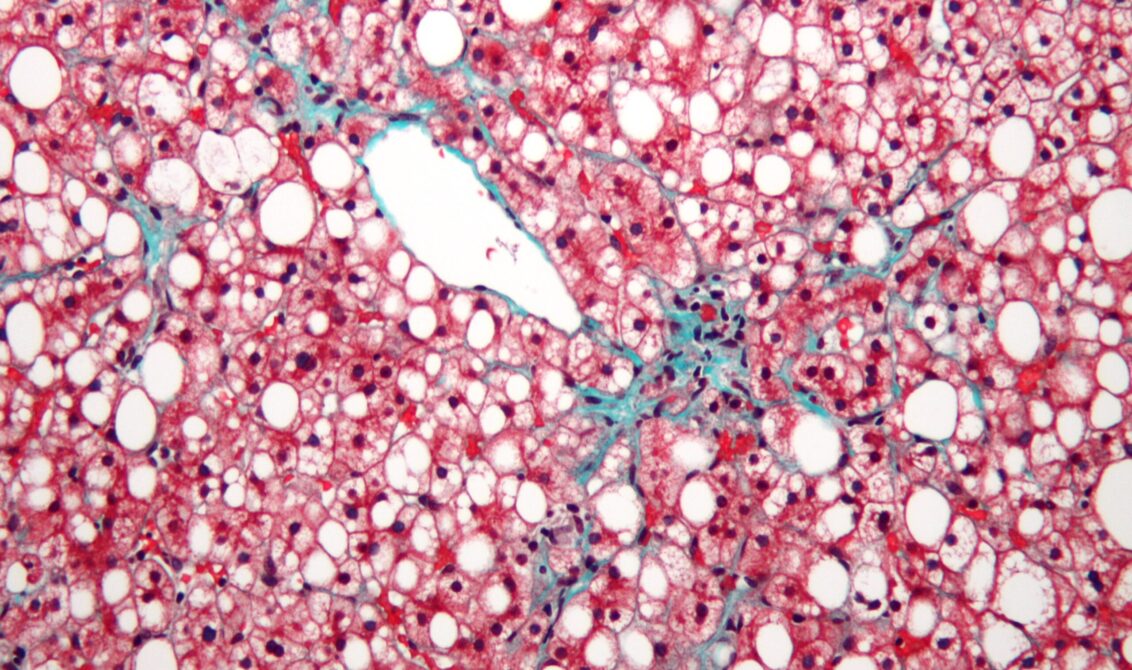by Dr. Marianne Teitelbaum
More than three million cases of fatty liver are diagnosed each year in the United States. This means that about 10 to 20 percent of Americans are affected. Most cases are diagnosed between the ages of 40 and 60.
It’s normal to have some fat in the liver, but too much can interrupt the normal liver function. A fatty liver occurs when the fat in the liver accounts for more than 5 to 10% of your liver’s weight. In many cases, fatty liver has no symptoms and does’t usually cause permanent damage unless it progresses. However, it can become harmful to the liver if its underlying the causes aren’t recognized and treated and the condition is allowed to progress.
There are two main types of fatty liver disease: Alcoholic liver disease (ALD) and nonalcoholic fatty liver disease (NAFLD).
You can get alcoholic liver disease from drinking too much alcohol. It can even show up after a short period of heavy drinking.
Nonalcoholic fatty liver disease (NAFLD) is more likely to happen to those who are middle-aged and overweight or obese. Some causes are: diabetes, medications, viral hepatitis, autoimmune liver disease, fast weight loss, malnutrition, and improper diet. These are the causes cited in the literature. However, I would like to add one other very important etiological factor: the consumption of polyunsaturated vegetable oils. I am stating this based on my years of experience in treating fatty liver disease. I have had many patients who had a very good diet, eating home-made food, good milk and yogurt, vegetarian, dahls, no leftovers, and yet they developed a fatty liver. The only mistake they made was cooking with vegetable oils (thinking that ghee was bad for them since it contains cholesterol). These oils, such as peanut, mustard oil, safflower, sunflower, canola, corn, margarine, etc., are highly unstable since they are polyunsaturated, and hydrogenate when heated, forming free radicals and oxidation.
When you swallow these oils they damage the liver. (And when they get into the arteries, they damage the lining there as well, causing a buildup of plaque). Ghee does not hydrogenate when cooked and is very easy for the liver to digest.
The truth is that many people are harboring some level of a fatty liver, especially if they grew up on vegetable oils (which is most of us!). In the beginning, it occurs at just a cellular level. If you stop eating bad fats and clean up the diet in other ways, it is fairly easy to reverse the fatty liver. However, if poor eating habits continue, or if the person continues to drink alcohol, a fatty liver will continue to worsen. Though you may not get symptoms in the early years, if the liver damage continues, you can develop symptoms such as fatigue, loss of weight or appetite, weakness, nausea, confusion or trouble concentrating.
The good news about the liver is that it is very good at rejuvenating itself. And the best herb to use for this is Mankand. This extremely rare herb is available in glyceride drop form. You can take three drops in 24 oz room temperature alkaline spring water. It could take a few years to totally reverse a fatty liver, so just keep taking it longterm to insure the best healing.
Vaidya also got us other good herbs for the liver, such as bhumi alma, which is great for cooling the heat in the liver and bringing the intelligence back to the liver. Also, if the liver is too hot (hot ranjaka in the pulse) you can put DGL Cream down the spine and on the liver to cool it down. In much the same way, you can put liver clay on the liver for 10 minutes a day to pull the heat out of the liver.
Liver Pro glyceride drops are recommended for cleaning the liver. The best foods are bitter gourd (karela or bitter melon), Loki squash and beets. Artichokes and dandelion are also very good as well.
A couple of cautionary notes: Vaidya always warned us not to buy turmeric from Indian markets as there is a chance they could be a white powder with a yellow dye sprayed on them. So make sure your turmeric is organic. Vaidya ground up the turmeric and dried it for us. He also recommended to avoid eating the fresh turmeric root, which was too heating for the liver. Also, be careful if you buy ghee from an Indian market. Since the 1960’s much of the ghee in India was made from hydrogenated vegetable oils and are contributing to much of the coronary artery disease we are currently seeing in many people from India. And as this ghee damages the liver, it is causing much of the diabetes we are also seeing in our Indian patients (in addition to the fact that Indians, like Americans, continue to eat vegetable oils, heating them at high temperatures as they fry their spices in them).
The ancient doctors were correct in stating that one should take very good care of the liver, since it was deemed the most important organ in the body. This is because the liver cleans the blood for the brain and other organs, it controls cholesterol, blood sugar, breaks down hormones, makes bile, is the seat of digestion and detoxification, makes glutathione, processes Vitamin D and thyroid hormones, to name a few of its many functions.
If you take care of this very important organ, eating good fats and oils, avoiding leftovers, and cooking at home – you will be rewarded with excellent health, avoiding heart disease, diabetes and many other diseases plaguing mankind today.
